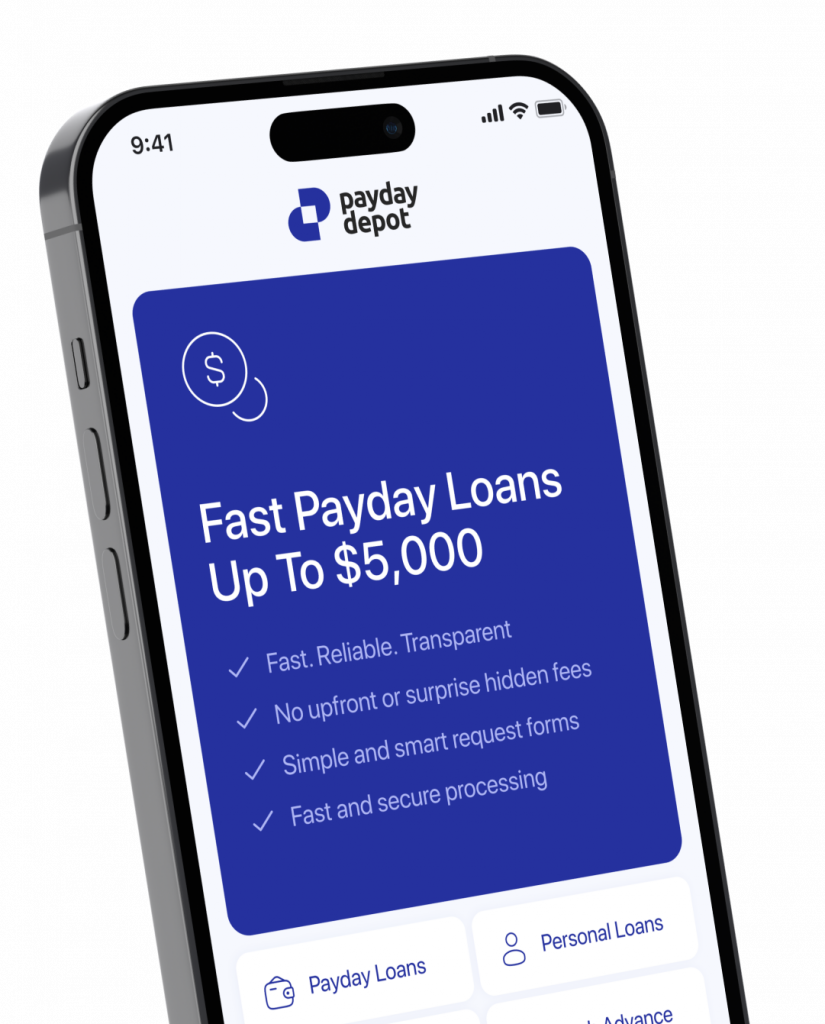Lauren Bowling, a finance and real estate expert, has a decade of experience in personal finance content creation. She founded the award-winning blog Financial Best Life, later sold to The Motley Fool in 2019. Lauren, a licensed real estate agent, focuses on millennial real estate buying. With diverse roles like Senior Content Strategist and Marketing Manager, she shares experiences to aid readers in financial decisions. Read more
Installment Loans Online, Instant Approval
Installment loans are one of the most prevalent products in consumer finance. Millions of consumers each year leverage some form of installment loan to finance life’s largest purchases. From cars to homes, to vacations and more, you’d be hard pressed to find someone who doesn’t currently have some type of installment loan.
Installment loans began increasing in popularity at the end of the 19th century, but consumers most commonly began paying for purchases in installments after the advent of the automobile. Today, people who have decent credit can easily generate small installment loans to purchase almost anything through the invention of “Buy Now, Pay Later” (BNPL).
Here’s what you should know about installment loans, including how to get one for yourself.
What Are Installment Loans?
Installment loans allow people to access a lump sum of money up front, then repay the lender in smaller increments over a set period of time. Installment loan products are most commonly seen in mortgages, auto loans, personal loans, and student loans. More recently, short-term loans have become popular in the retail world through BNPL.
Installment loans can be offered through both financial institutions and online lenders. Although most lenders take applications and manage the loan approval and disbursement process digitally, online installment loans are offered by online lenders that operate exclusively via the Internet, without a traditional brick and mortar footprint.
Many online lenders can offer faster approval and funding, and come with slightly better interest rates than their brick-and-mortar counterparts because they do not have to carry the overhead costs of physical locations.
Types of Installment Loans
Installment loans span a wide variety of financial products. Technically, any type of loan repaid at a fixed interval qualifies an installment loan. However, there are two types of installment loans: secured and unsecured.
A secured installment loan requires collateral — something of material value such as a vehicle or a piece of property — to protect the lender’s investment in the event that the borrower does not pay back what’s owed. If the borrower defaults on the debt, the lender gets to keep the collateral.
An unsecured installment loan doesn’t require any form of collateral for the borrower to obtain funds.
Secured or unsecured loans can come in many different types of products depending on the purpose of the funds. Common types of installment loans include mortgages, used to purchase a home; auto loans, used for purchasing vehicles; student loans to pay for college; debt consolidation loans; personal loans; and BNPL loans to fund personal expenditures.
Here’s a breakdown of common types of installment loans:
- Installment Loans
- Secured
- Mortgage Loan
- Auto Loan
- Unsecured
- Student Loans
- Personal Loans
- Buy now pay later/”short term” loans
- Debt consolidation loans
- Secured
Secured vs. Unsecured Installment Loans
With a mortgage loan, the house a borrower is purchasing is used as the collateral to secure the debt. This means if a borrower defaults or doesn’t make their payments, the bank takes the house through a process known as foreclosure.
Unsecured loans don’t require collateral, but often come with higher interest rates because of the convenience and ease of receiving loan funds without putting any assets at risk.
Unsecured loans such as student loans and personal loans often come with higher interest rates than secured installment loans. Yet they often provide a better way to fund necessary expenses compared to using credit through a credit card, which comes with some of the highest interest rates to borrowers.
How to Apply for an Installment Loan
Applying for an installment loan is a snap these days thanks to the convenience of online lenders, so borrowers can obtain funds without ever having to set foot inside a bank or physical location.
Applying for an installment loan typically encompasses the following steps:
Get pre-qualified for a loan. First, a borrower needs to check their credit score and get pre-qualified for the loan amount and interest rate. Thanks to online aggregators, borrowers can do this on a single website and receive multiple quotes from lenders within minutes. A wide range of interest rates may be offered, and these depend solely on the borrower’s credit score.
Compare interest rates and loan terms. After shopping interest rates, a borrower should always compare the rates between multiple lenders. It only takes a few moments to see which lender is offering the most competitive rate and lowest loan origination costs. Consumers should be sure to look at loan fees and costs as this can impact how much you’ll pay out of pocket on the installment loan and make one lender more expensive than the other, even if a rate is lower.
If you have a long-standing relationship with your primary bank, check your bank’s interest rates first to see if you qualify for a customer loyalty discount. If the rate isn’t competitive, borrowers should prepare to shop for an installment loan online.
Gather all the data you’ll need for the application. Once a borrower finds the right offer for their needs, they’ll need to formally apply for the loan. You’ll submit an application as well as income verification documents such as bank statements, a W2 from work, or tax returns.
The length of the application, as well as the number of documents you will need to produce, will depend on the type of loan, the amount you’re trying to borrow, and can even vary from lender to lender.
For example, short-term lenders offering loans of $5,000 or less may not do more than a soft credit pull, and approved borrowers can receive their funds by next day. On the other hand, seeking hundreds of thousands of dollars for a mortgage is a far riskier undertaking, and approved borrowers may need to wait between 30 to 60 days for the bank to underwrite and approve the loan.
Make sure you can receive the loan by setting up your financial accounts. Once the loan funds have been disbursed, the borrower must begin repaying the loan in monthly installments.
Advantages and Disadvantages of Installment Loans
Having a fixed repayment schedule on an installment loan can help when it comes to budgeting for debt repayment. As an added benefit, installment loans often come with much lower interest rates than those offered on credit cards or lines of credit.
Credit works best for those who use it consistently, so lenders like to see a mix of both revolving credit and installment loans in your borrowing history. Your credit mix accounts for 10 percent of your FICO score. If you consistently pay your full installment on time each month, your FICO score will benefit from the healthy repayment history, and an installment loan will nicely round out your credit mix.
The only real disadvantage to an installment loan is for those who do not prioritize on time payments. Any late or missed payments will negatively impact a credit score, while also incurring fees.
How Installment Loans Affect Your Credit Score
When used responsibly, installment loans can actually provide big benefits to an individual’s credit score. The fact that installment loans require fixed payments over a set length of time means that borrowers have the opportunity to build good, strong credit simply by making their payments on time.
Borrowers may see fluctuations in their credit due to an installment loan if they miss a payment or form a pattern of not making payments at all. They may also see a decrease in their credit score when the installment loan is paid off in full.
Since most installment loans are closed out upon successful repayment, many borrowers may see a slight dip in their credit when a loan is paid off because there’s no longer a history of consistent repayment on outstanding debt. The good news is that your credit score will adjust and balance out once creditors realize your balance was paid off in full. Any dips in your score will be minor and temporary, and it’s always good financial practice to pay off your installment loans to decrease a balance over time.
Your credit utilization score accounts for 30% of your FICO score. This portion of your credit score divides the total amount of credit available to you by the total outstanding balance you carry across all of your financial accounts. For the most part, lenders like to see credit utilization below 30%.
Your debt-to-income ratio (DTI) is calculated by dividing the total of all your monthly debt payments, and then dividing that number by your monthly take-home income after taxes. So, for example, someone makes $3,000 a month after taxes, but has $1200 in debt payments across a mortgage, car loan, and personal loan. This individual’s DTI is 40%.
Ideal DTI varies by lender, but to loan out more money, most would want to see a DTI of less than 36%. As long as the sum total of all current debt repayments are less than this amount, anyone will typically be able to borrow up to that limit.
The one exception to this rule are mortgages. Individuals pursuing home-related loans can have up to 10 conventionally financed mortgages at once.
Can You Get an Installment Loan With Bad Credit?
Your ability to obtain an installment loan depends on a variety of factors including your credit score, debt-to-income ratio, how much money you need to borrow, and your eligibility based on age, employment and other personal factors.
Some lenders will lend to borrowers with credit scores as low as 580 credit score, but most lenders typically require a minimum score between 600–640, especially when giving out larger installment loans such as mortgages.
Loans are given out largely based on the borrower’s credit score, repayment history, and financial circumstances. It is possible for a borrower to obtain an installment loan with bad credit, but they may end up paying more in interest than their counterparts with higher credit scores because poor-credit borrowers are riskier investments in the eyes of a lender.
The best way for a borrower with bad credit to obtain an installment loan is to shop multiple lenders to see if they qualify for a loan. Once they receive pre-approval, a borrower with poor credit can decide whether the convenience of having immediate access to cash funds is worth the cost of the full loan repayment, including interest and fees. In some instances, such as with mortgages, it may make sense to wait and borrow until a person has a more competitive score and can borrow money at a lower interest rate.
What Are Examples of Installment Loans?
There are many common types of installment loans:
Mortgage Loans
A home or property acquisition is often the most expensive purchase of someone’s lifetime, and it makes sense that most people would seek out a mortgage to pay for the expense. Mortgages are some of the most prevalent installment loans, and they come in 15-year or 30-year repayment terms.
All mortgage loans are installment loans, as they are repaid in fixed, monthly installments over a set term. There are many subtypes of mortgage loans available to consumers depending on their financial goals, credit, and the amount they need to borrow. Jumbo loans, FHA loans, conventional mortgages, adjustable and fixed-rate loans are all different mortgage loan options available to home buyers.
Personal Loans
Personal loans can be leveraged for a variety of expenses, and there are typically very few limitations on how the funds are spent. Many consumers use personal loans to consolidate debt, fund vacations or travel, pay for wedding expenses or medical debt or finance home improvements. There are a few restrictions on how personal loans can be used however. For example, personal loans cannot be used for home down payments, business expenses, or college tuition.
Debt Consolidation Loans
Many personal loans can be used for debt consolidation. But there are debt consolidation-specific loan products specifically designed for borrowers struggling to make headway with their debt repayment.
Let’s say an individual has $15,000 in credit card debt across three cards with different interest rates of 17%, 19% and 24%. The monthly minimums alone cost this person $500 per month.
This borrower could take out a single debt consolidation loan at a lower interest rate — let’s say 10% — and use the installment loan funds to pay off each credit card. Over the next few months or years, this person only needs to keep up with a single payment on the loan. They would also save a lot of money on interest, and simplify their finances by not having to keep up with three cards and three different payments.
Student Loans
College is expensive, and many students turn to student loans as a way to finance college expenditures such as tuition, room and board, and books. Student loans are offered by both private lenders and the federal government, with 93% of borrowers utilizing federal student loans to pay for school. The average term of repayment for a student loan is 10 years, but it often takes student loan borrowers much longer to repay this type of installment loan.
Car Loans
Most car buyers do not have tens of thousands of dollars on hand to purchase a car outright, even though a car is usually a necessary expense for many U.S. households. Many consumers finance the cost of buying a car, often putting a little money down and then taking out an installment loan to finish paying the car off over time.
While interest rates vary by lender and credit history of the buyer, data shows auto installment loan amounts have increased over the last decade. 2022 reporting from LendingTree shows that the average buyer in 2022 took on $41,000 in debt for a new car, and around $27,000 for a used one.
Buy Now, Pay Later loans
The newest type of installment loan is the “Buy Now, Pay Later” (BNPL) option offered at the point of sale for retailers. These installment loans, also often referred to as micro or short-term installment loans, enable a buyer to break up a small purchase into smaller payments, and repay what they owe at a weekly interval. The average BNPL installment loan is often less than $1,000 dollars.
What Is the Advantage of Installment Loans?
With today’s increased cost of living and record-high inflation, paying for a car, college tuition, or medical debt in full becomes cost prohibitive. An installment loan enables people to pay for these costs as need arises, while paying off their costs over time.
Installment loans enable people to fund big purchases for which they may not have the cash up front. These loans allow borrowers to spread out the financial burden evenly over time, often at a fixed rate of interest.
For example, a loan for a house can be repaid over 15 or 30 years, or an auto loan can be repaid in four or five years. The buyer gets to drive the car or live in the house immediately, but take their time paying off the purchase.
What Is the Use of Installment Loans?
Installment loans are used for many purposes, from personal loans to fund large expenditures such as a wedding or medical expense, to purchasing a car or a home or paying for college. The benefit of paying via an installment loan is for a consumer to access a large sum of money for a big expenditure and repay that amount in fixed increments over time, typically at much lower interest rate than credit or payday loans.
What Is the Difference Between a Personal Loan and an Installment Loan?
There is no difference between a personal loan and an installment loan. Rather, a personal loan is a type of installment loan. Any type of loan product paid in regular intervals is an installment loan such as your car loan, mortgage, or student loan. While each loan product has different nuances, they are all a subcategory of a larger classification: the installment loan.
What Are the Two Types of Installment Loans?
There are two different types of installment loans: secured and unsecured. These are aptly named as the differences of each are right in the name!
- A secured installment loan means you need to offer something of value to secure the loan. A mortgage is the most common example of a secured installment loan, where the funds borrowed are secured by the property itself. Most secured installment loans require some type of collateral of equal value to the loan.
- An unsecured installment loan doesn’t require any collateral for the debt. Common examples include medical debt or personal loans. With unsecured installment loans, a consumer does not have to provide an asset in order to obtain funds or credit.
What Type of an Account Is an Installment Loan?
Most forms of loans or credit these days are installment loans. An installment loan account will typically have the following hallmarks:
- The loan amount will be paid to the borrower in a large lump sum at one time.
- An installment loan will always be repaid in fixed amounts, also known as installments (hence the loan-type name).
- Once an installment loan is repaid in full at the end of the loan term, the account will typically be considered closed.
There are five types of installment loan accounts that are most commonly seen and used by financial consumers today: Mortgages, auto loans, student loans, personal loans, and BNPL micro-loans.
Conclusion
There are many advantages to installment loans and, frankly, there’s little to dislike. The biggest advantage to an installment loan is that a large lump sum is disbursed at one time, the borrower gets the funds they need, and then they have the convenience of repaying that amount in smaller payments over time.
For those willing to make on-time payments for the entirety of the loan term, installment terms can help them build good credit, earn equity in their home, and finance big expenditures with relative ease.
FAQ
How Many Installment Loans Can I Have at One Time?
Most consumers have a mix of installment loans in their credit profile at any given time: a mortgage, student loan, car loan, or sometimes all three. There really isn’t a limit to the amount of installment loans you can have, provided the total monthly payments on those loans does not exceed your debt to income ratio.
Will Paying Off an Installment Loan in Full Affect My Credit?
Installment loans are close-ended installment accounts, meaning that, once the loan is repaid, the account is closed. Repaying an installment loan in full can cause a temporary drop in a borrower’s credit score. This “drop” is due to a temporary decrease in total available credit. But once the bureau adjusts your debt-to-income and credit utilization based on the paid off loan, the credit score will go back up.
Any drop in a credit score caused by paying off an installment loan is often very minor and not permanent. It is always in a borrower’s best interest to repay debts.
What Is the Easiest Installment Loan I Can Get Approved For?
Many installment loan options exist for those with less-than-ideal credit or a thin credit profile.
With this in mind, the easiest installment loan to qualify for is a personal loan that offers no hard credit check, because then anyone can access funds.
“Bad credit” options most commonly come in the form of payday loans, loans against a car title, or a personal loan. These options come with benefits such as fast funding and no credit check, but the downside is they are high-interest, short term loans, which means borrowers will have to pay the money back quickly and at great expense.
Are There Any Alternatives to Installment Loans?
Other than a loan from a friend or family member, the primary alternative to an installment loan is pursuing revolving credit. There are many different kinds of revolving credit loans, including lines of credit, credit cards, and Home Equity Line of Credit (HELOC) options.
The big difference between revolving credit and an installment loan is that a credit line is perpetually open, and can be used over and over again. Rather than one lump sum being paid off over time, credit allows people to spend what they need. In turn, those borrowers are charged interest only on what they spend, and they can make multiple purchases over and over again, so long as they pay on the balance.
Credit often comes in the form of unsecured debt, which means anyone with a decent credit score can access credit with no collateral or money down. However, credit card rates often skew higher than interest rates offered on an installment loan.
Although there is more flexibility with credit products to access cash when you need it, it is easier to spend more than intended and for excess interest to accrue on the balance.



